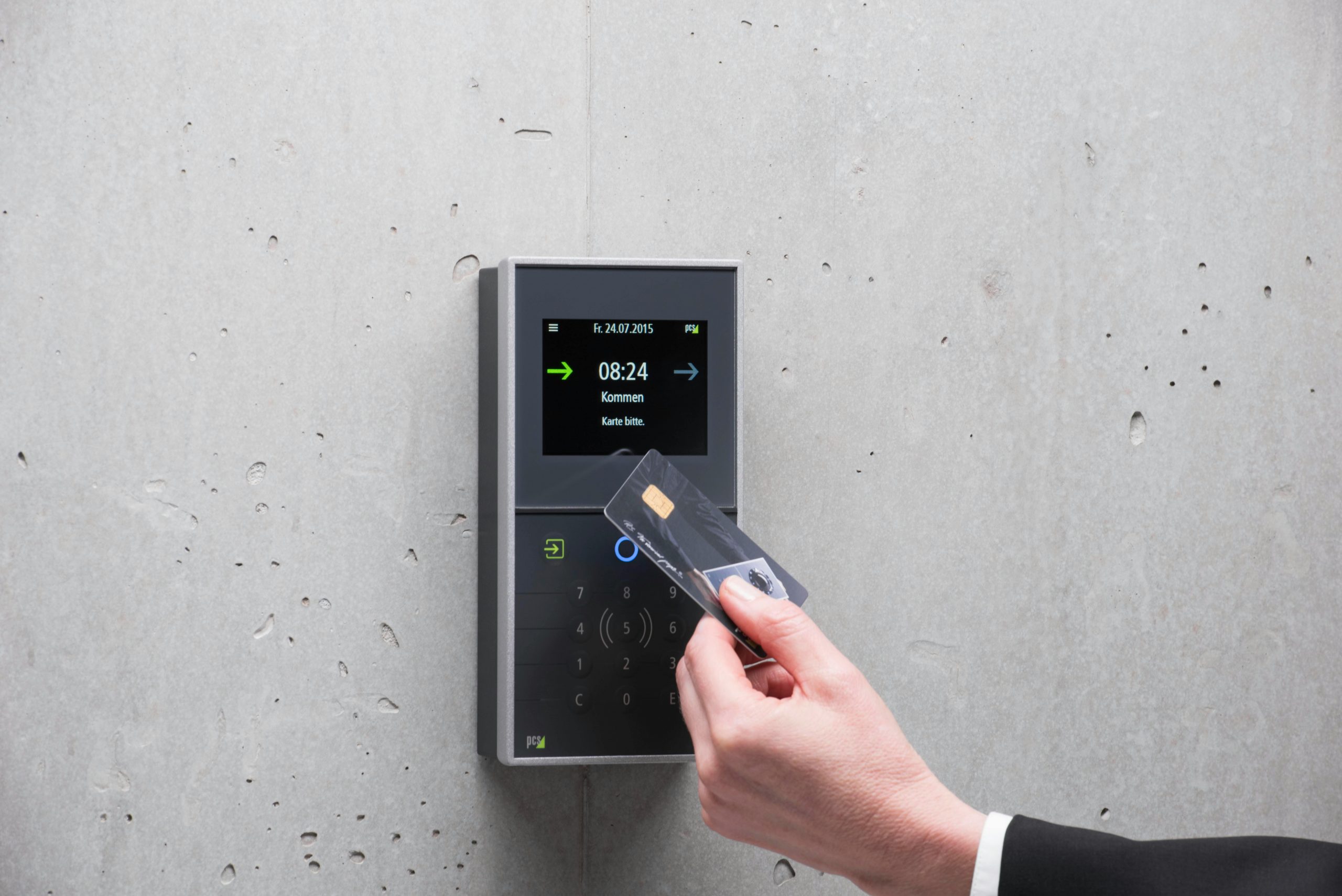
- Key card entry systems replace traditional keys with electronic credentials, offering a smarter, more secure way to manage access to business premises.
- These systems combine hardware and software, using card readers, access panels, and centralized software to grant or deny entry within seconds.
- Businesses prefer key card systems because they allow instant deactivation of lost cards, detailed access tracking, and easier management than mechanical locks.
- Different technologies exist—magnetic stripe, RFID, smart cards, and mobile credentials—each offering unique balances of cost, durability, and security.
- Beyond security, they improve efficiency by streamlining employee access, reducing administrative workload, and integrating with surveillance or HR systems.
- Modern systems can be cloud-based or on-premise, allowing remote management, scalability, and flexible access control across multiple locations.
- The future of access control is smart and connected, integrating biometrics, mobile apps, and IoT for intelligent, adaptive workplace security.
With heightened security and efficiency as top priorities, key card entry systems have become a cornerstone of modern business access control. From small offices to sprawling corporate campuses, these systems simplify how organizations protect people, data, and property—all while making daily entry more seamless.
But what exactly makes key card systems so popular, and how do they actually work? Let’s unpack the details and see why so many businesses rely on this secure yet flexible access solution.
What Is a Key Card Entry System?
A key card entry system is a type of physical access control system that uses electronic credentials instead of traditional keys. Authorized individuals use key cards—often resembling a credit card—to unlock secured doors or gates.
When a card is presented to a reader, it transmits data through magnetic strips, RFID, or NFC technology, verifying if the person has permission to enter. If they do, the door unlocks automatically.
In simple terms, key card systems replace the old-fashioned metal key with a smarter, more manageable digital alternative.
How Does a Key Card System Work?

The magic of a key card entry system lies in its combination of hardware and software. Here’s a quick breakdown of how it works:
- Card or Credential: Each user has a unique card programmed with their access permissions.
- Card Reader: Installed on doors or gates, it reads the data when a card is swiped or tapped.
- Access Control Panel: The “brain” of the system that processes the data and decides whether to unlock the door.
- Software Management: Administrators can add, modify, or revoke permissions through centralized software.
When an employee presents their card, the reader sends the card’s ID to the control panel. The system checks this ID against the database, and if it matches an authorized user, access is granted—usually in seconds.
Why Businesses Are Ditching Traditional Keys
Metal keys may be simple, but they pose major challenges for modern organizations. Losing a single key can compromise an entire building’s security. Replacing locks or rekeying doors is costly and time-consuming.
Key card systems, on the other hand, eliminate those headaches. You can deactivate a lost or stolen card immediately—no locksmith needed. Plus, the system logs every entry and exit, giving management a digital record of who accessed what and when.
In short, businesses are choosing convenience, security, and control over outdated manual methods.
Types of Key Card Entry Systems
There isn’t just one type of key card system. Each variation uses different technologies to balance cost, security, and convenience.
1. Magnetic Stripe Cards
- Contain data on a black magnetic strip (similar to credit cards)
- Require swiping through a reader
- Simple and affordable, but easy to wear out or duplicate
2. Proximity Cards (RFID)
- Use radio frequency identification technology
- Users just wave or tap their card near the reader
- More durable and secure than magnetic stripe cards
3. Smart Cards (NFC)
- Use microchips for encrypted communication
- Support multiple applications, like time tracking or payments
- Offer advanced data protection and flexibility
4. Mobile Credentials
- Replace physical cards with smartphone-based credentials
- Use Bluetooth or NFC to unlock doors
- Convenient and touchless—perfect for modern offices
Each option has its own strengths. Magnetic stripe systems are budget-friendly, while smart cards and mobile access provide higher security and versatility.
How Key Card Entry Systems Improve Workplace Security

Security is the number one reason companies implement access control. Key card systems provide layered protection that’s difficult to achieve with mechanical locks.
Here’s how they enhance safety:
- Personalized Access: Each card is tied to an individual, preventing unauthorized duplication.
- Access Scheduling: Limit entry by time or department (e.g., cleaning crew access after hours only).
- Audit Trails: Every access attempt is logged, making it easier to investigate incidents.
- Quick Response: Lost or stolen cards can be deactivated instantly.
- Controlled Zones: Sensitive areas (like data centers or inventory rooms) can have restricted access.
Together, these features make key card systems a powerful tool for risk management and compliance.
What Are the Business Benefits Beyond Security?
While enhanced protection is the main attraction, key card entry systems offer several operational advantages as well.
Streamlined Access Management
Managing hundreds of physical keys can be a logistical nightmare. With key cards, administrators can issue, modify, or revoke credentials digitally in seconds.
Improved Employee Experience
Employees appreciate not having to juggle multiple keys. With one badge (or even their phone), they can access every area they’re authorized for.
Cost Efficiency
Although installation requires an upfront investment, long-term savings are significant. There’s no need for rekeying locks, and the reduced security risks can lower insurance premiums.
Integration with Other Systems
Modern key card systems can integrate with:
- Video surveillance
- Alarm systems
- Visitor management software
- HR databases
This creates a unified, automated security ecosystem that keeps your workplace efficient and safe.
What Features Should You Look For in a Key Card System?
Choosing the right system for your business depends on your size, security level, and budget. Here are the most important features to consider:
- Customizable Access Levels: Allow different permissions for employees, contractors, and visitors.
- Cloud-Based Management: Manage access remotely via web or mobile app.
- Scalability: Ensure the system can grow with your organization.
- Multi-Door Support: Useful for larger facilities or multi-site businesses.
- Two-Factor Authentication (2FA): Adds an extra layer of protection.
- Reporting and Alerts: Get notified about suspicious access attempts.
- Energy Efficiency: Smart locks can automatically adjust building lighting or HVAC based on occupancy.
These features not only secure your premises but also enhance operational visibility.
Are Key Card Systems Difficult to Install?
Not necessarily. Installation complexity depends on your building’s infrastructure and the system type.
For New Buildings
If you’re setting up from scratch, it’s easiest to install a wired access control system with integrated door controllers and readers. These are robust and ideal for large facilities.
For Existing Buildings
Retrofit-friendly wireless systems or cloud-based options can often be added without major construction. Many providers offer plug-and-play door readers that connect over Wi-Fi or Bluetooth.
Partnering with a professional installer ensures proper setup, wiring, and software configuration. It also guarantees compliance with building codes and fire safety regulations.
How Much Do Key Card Systems Cost?
Prices vary based on system size, technology, and brand. On average:
- Small offices: $1,500–$3,000 for a few doors
- Medium-sized businesses: $3,000–$10,000
- Large enterprises: $10,000+ depending on scale and integration
While this may seem costly, consider the long-term savings on rekeying, security breaches, and administrative time. Plus, the added control and data insights often justify the expense.
Can You Use Key Card Systems with Existing Doors?
In many cases, yes. Modern systems are highly adaptable and can often be fitted to existing doors without major alterations. Electronic locks can replace standard latch locks or be mounted on top of them.
However, compatibility depends on:
- Door material (metal, wood, glass)
- Frame structure
- Existing electrical wiring
A professional installer can assess your site and recommend the best solution, ensuring functionality and compliance.
What Are the Risks of Key Card Entry Systems?
While highly secure, no system is 100% foolproof. Some potential vulnerabilities include:
- Lost or Stolen Cards: If not deactivated quickly, they can be misused.
- Card Cloning: Older magnetic stripe cards are easier to duplicate.
- System Downtime: Power outages or network issues may disrupt access.
- Data Breaches: Weak software passwords or unencrypted systems pose cyber risks.
Fortunately, these risks can be mitigated by:
- Using encrypted smart cards or mobile credentials
- Implementing strict access policies
- Conducting regular software updates and security audits
How Do Key Card Systems Compare to Other Access Control Methods?
| Access Method | Pros | Cons |
| Traditional Keys | Low upfront cost | No tracking, expensive to rekey |
| PIN Codes | No physical card needed | Codes can be shared or forgotten |
| Biometric Scanners | High security, no credentials required | Expensive, privacy concerns |
| Key Card Systems | Flexible, trackable, easy to manage | Cards can be lost or cloned (if unencrypted) |
For most businesses, key cards strike the ideal balance between security, affordability, and convenience.
Should You Choose On-Premise or Cloud-Based Access Control?
Both models have advantages, depending on your business setup.
On-Premise Systems
- Data and control stay within your network
- Ideal for companies with strict security policies
- Higher upfront cost and maintenance responsibility
Cloud-Based Systems
- Manage access remotely via apps or dashboards
- Automatic software updates
- Subscription-based pricing model
- Great for growing or multi-location businesses
Many organizations now prefer cloud-based access control for its scalability and reduced IT workload.
Best Practices for Managing a Key Card Entry System
Getting the most out of your system means keeping it well-managed. Here are some tips:
- Set clear access policies for employees and contractors
- Regularly update permissions—remove access for former staff immediately
- Use tiered access levels to limit who can reach sensitive areas
- Audit access logs monthly to detect unusual patterns
- Combine with CCTV for visual verification
- Train employees on how to use and report lost cards
Following these practices keeps your system running smoothly and securely.
The Future of Key Card Entry Systems
The future of access control is increasingly smart and connected. Trends shaping the next generation of key card systems include:
- Mobile-First Credentials: Replacing badges with smartphone apps
- Biometric Integration: Combining cards with facial or fingerprint ID
- AI-Driven Access Monitoring: Detecting unusual behavior or tailgating
- IoT Connectivity: Linking access systems with smart lighting, HVAC, and energy management
- Cloud and Edge Computing: Enhancing speed, scalability, and data security
These innovations make access control not just about entry—but about intelligent building management.
The Bottom Line: Key Card Systems Are Worth the Investment
Key card entry systems are no longer just a security luxury—they’re a business necessity. Whether you run a small startup or a large corporate office, they offer unmatched control, flexibility, and insight into workplace safety.
By replacing keys with digital credentials, you gain:
- Streamlined access for employees
- Real-time monitoring for management
- Stronger protection against unauthorized entry
As technology continues to evolve, key card systems will only become smarter, more affordable, and more essential. Investing in one today sets the foundation for a safer, more efficient workplace tomorrow.